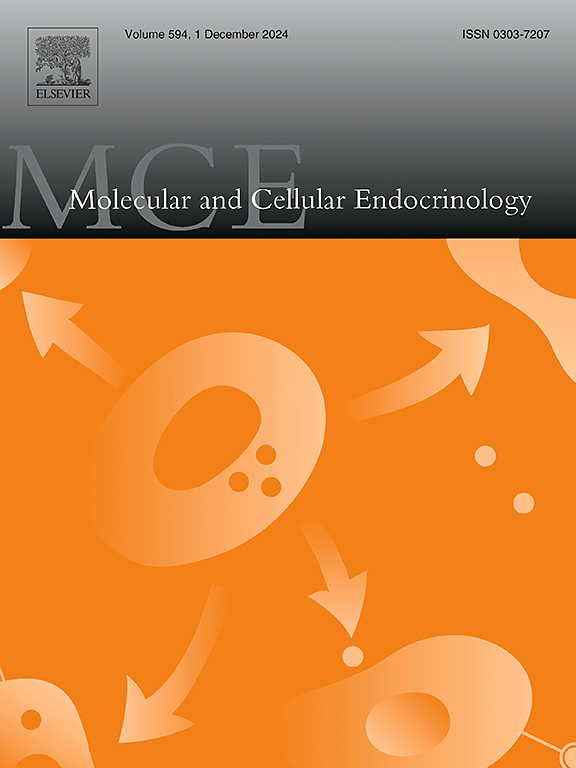Pirin knockdown alleviates the progression of metabolic dysfunction-associated steatotic liver disease by inhibiting hepatic lipid deposition, inflammation, and fibrosis
IF 3.6
3区 医学
Q2 CELL BIOLOGY
引用次数: 0
Abstract
Metabolic dysfunction-associated steatotic liver disease (MASLD) is a global disease with a broad spectrum of symptoms. Pirin (PIR) is involved in a variety of biological and molecular processes. However, the role of PIR in MASLD remains unclear. Rats were fed with high-fat and high-cholesterol (HFC) diet to induce MASLD. Time-course results showed that liver in HFC-fed rats exhibited a progressive increase in hepatic tissue damage over time (3, 6, and 9 weeks), and developed in obvious hepatic fibrosis and steatosis at week 9. Meanwhile, HFC feeding also gradually increased PIR expression in liver. In vitro, PIR expression was up-regulated in palmitic acid (PA)-induced Hep3B cells. PIR knockdown using PIR shRNA plasmid inhibited steatosis and expression of ACLY, FASN, and XBP1 in PA-induced Hep3B cells. Knocking down PIR inhibited hepatocyte inflammation by inhibiting phosphor-NF-κB p65 into the nucleus, which inhibited the expression of TNF-α and IL-1β. In MASLD, hepatocyte inflammation activates hepatic stellate cell, thereby leading to hepatic fibrosis. Supernatant from PA-treated Hep3B with PIR knockdown inhibited LX-2 activation, as evidenced by decreased expression of Col1A1 and α-SMA in LX-2 cells. Together, these results suggested that PIR knockdown might alleviate the progression of MASLD by inhibiting liver lipid deposition and inflammation, further inhibiting liver fibrosis. Transcriptome data analysis suggested that alteration in the expression of lipid metabolism-related pathways and genes might be a potential cause of PIR regulation in MASLD progression. These findings may reveal a novel target for MASLD therapy.

Pirin敲低可通过抑制肝脏脂质沉积、炎症和纤维化来减轻代谢功能障碍相关脂肪变性肝病的进展。
代谢功能障碍相关脂肪变性肝病(MASLD)是一种具有广泛症状的全球性疾病。Pirin (PIR)参与多种生物和分子过程。然而,PIR在MASLD中的作用仍不清楚。采用高脂高胆固醇(HFC)饲料诱导大鼠MASLD。时间过程结果显示,随着时间的推移(3,6和9周),hfc喂养大鼠肝脏的肝组织损伤逐渐增加,并在第9周出现明显的肝纤维化和脂肪变性。同时,HFC喂养也逐渐增加肝脏中PIR的表达。在体外,棕榈酸(PA)诱导的Hep3B细胞中PIR表达上调。在pa诱导的Hep3B细胞中,使用PIR shRNA质粒敲除PIR可抑制脂肪变性和ACLY、FASN和XBP1的表达。下调PIR通过抑制磷酸化nf -κB p65进入细胞核,抑制TNF-α和IL-1β的表达,从而抑制肝细胞炎症。在MASLD中,肝细胞炎症激活肝星状细胞,从而导致肝纤维化。PIR敲低pa处理Hep3B的上清液抑制LX-2的活化,LX-2细胞中Col1A1和α-SMA的表达降低。综上所述,这些结果表明PIR敲低可能通过抑制肝脏脂质沉积和炎症来缓解MASLD的进展,从而进一步抑制肝纤维化。转录组数据分析表明,脂质代谢相关通路和基因表达的改变可能是PIR调节MASLD进展的潜在原因。这些发现可能揭示了MASLD治疗的新靶点。
本文章由计算机程序翻译,如有差异,请以英文原文为准。
求助全文
约1分钟内获得全文
求助全文
来源期刊

Molecular and Cellular Endocrinology
医学-内分泌学与代谢
CiteScore
9.00
自引率
2.40%
发文量
174
审稿时长
42 days
期刊介绍:
Molecular and Cellular Endocrinology was established in 1974 to meet the demand for integrated publication on all aspects related to the genetic and biochemical effects, synthesis and secretions of extracellular signals (hormones, neurotransmitters, etc.) and to the understanding of cellular regulatory mechanisms involved in hormonal control.
 求助内容:
求助内容: 应助结果提醒方式:
应助结果提醒方式:


